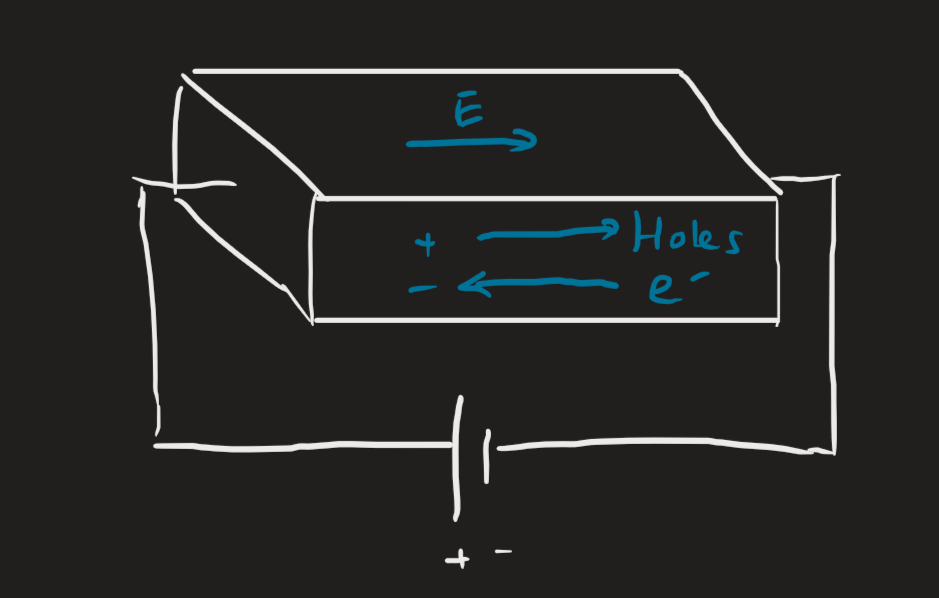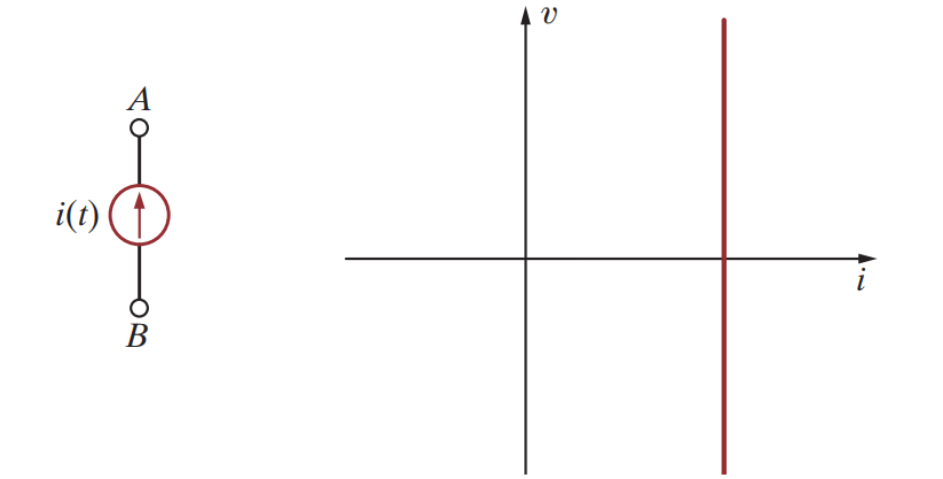Electrical current () is the rate of flow of charge through a point, measured in amperes (, ):
In a static situation (where the electric field is 0), electrons move in every direction and there is no current. Because charge is conserved, the current through a material is the same in any cross-section.
Direct current remains constant with time. Alternating current periodically reverses direction and changes magnitude with time.
Electromagnetism
When an electric field is applied to a material (often a conductor or semiconductor), a drift current is produced, where holes/electrons travel with a drift velocity:
where is the hole mobility (a constant, in units of m²/Vs) that represents the ease holes move through the silicon. Current will flow in the opposite direction of electron flow.
 For intrinsic silicon:
For intrinsic silicon:
If we define as the unit (holes or electrons) per volume, we have:
where is the elementary charge. Then we can take this with respect to time:
Where the coefficient is the conductivity of the material, :
As given above.
Circuit analysis
The flow of positive charge is taken to be the direction of electric current. Under the passive sign convention, current flows from the positive to negative terminal of components. Negative current flows in the opposite direction.
The current through multiple elements in series is equal to each other. For elements in parallel, it’s split. The current into a junction must equal the current out, i.e., .
 Independent current sources maintain a specified current regardless of the voltage across its terminals.
Independent current sources maintain a specified current regardless of the voltage across its terminals.

See also
- Current density
- Ohm’s law, which we use to relate to voltage and resistance